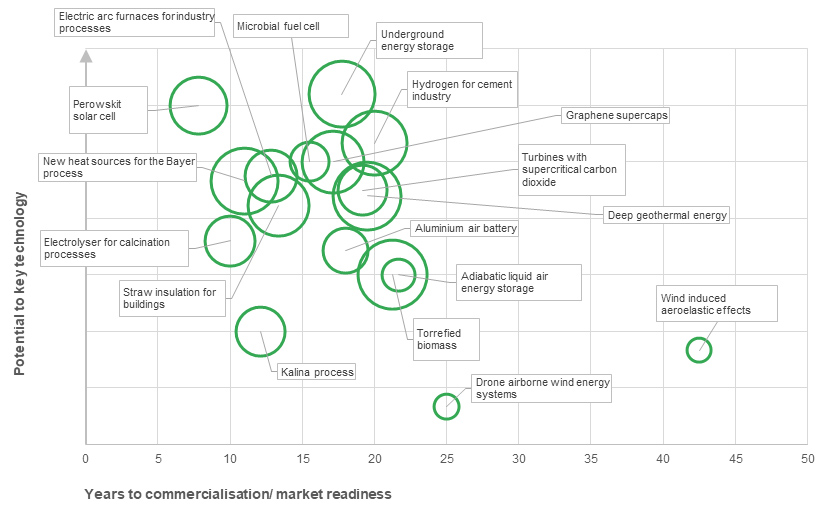Study of the Potential of Popcorn-Technologies for the Austrian Energy System
Short Description
Future scenarios and foresight studies for the energy system can only provide a range of possible results. Uncertainties increase significantly when certain technological developments are assumed. The potential study of popcorn technologies for the Austrian energy system aims to be a support for the creation of future scenarios and the development of RTI strategies. On the one hand, the preparatory work for corresponding technological leaps can be used when developing scenarios. On the other hand, strategic measures can be taken that specifically trigger these technological leaps.
The aim of the "Popcorn" project was to identify energy technologies and energy innovations that are currently in a relatively early stage of development (TRL 3-7), however they have enormous technical and economic potential. Derived from this, new accents are to be set for existing topics in energy research and, if necessary, new R&D topics should be identified from the perspective of public funding. The criteria (maturity, benefits / potentials, R&D effectiveness, social acceptance) and the choice of technology were determined on the basis of a literature search. The preparation of the results on the basis of profiles is intended to provide an overview of the application and technology groups in which there are accumulations, in particular their potential to influence the energy system and the necessary "heat" (i.e. framework conditions) so that the technology can ideally "pop up".
An overall assessment and the derivation of general conclusions in view of the individual technologies from different fields of technology are inappropriate. It can be stated, however, that the following three technologies with a current low level of maturity could play a key role in their field in the future.
- Underground storage
- Perowskite solar cells and deep geothermal energy
- Hydrogen in industrial processes
Underground storage facilities are becoming increasingly important due to the fluctuation in the supply of energy from renewable energies. A closed underground water body can serve as a natural heat store, for example. If there is also the option of storing compressed air (liquefied or not) in appropriate quantities, the construction of an adiabatic compressed air storage facility is obvious. Open research questions include the assessment of possible impairment of the groundwater as well as explorations and systematic comprehensive assessments of the expansion potential.
The perovskite solar cell is a non-silicon-based thin-film PV technology that uses perovskite (a type of mineral), which is very good at absorbing light. Efficiencies of 24 % have already been achieved in the laboratory, but so far only with small cell areas. Other challenges are the relatively short service life and sensitivity to moisture. Due to the thin-film technology, this type of solar cell can be used for various applications (e.g. on textiles).
Deep geothermal energy is usually used from a drilling depth of 400 meters, although this can also reach several kilometers. As a result, geothermal deposits with temperature levels from 60 ° C to around 200 ° C (but also higher) are made usable. A fundamental distinction is made between hydrothermal systems that use natural aquifers and petrothermal systems that inject the heat transfer medium themselves. The next research activities should focus on minimizing the exploration risk, reducing costs and analyzing risks through development and use.
Clinker kilns require high temperature heat and are usually powered by fossil fuels. Hydrogen could thus become a key technology in the cement industry, whereby the current state of knowledge favors a combination of 70% biomass, 20% hydrogen and 10% plasma energy in order to use the best possible fuel or the optimal heating technology in the respective process step. Pilot projects have already started, but full integration into a correspondingly extended process chain (direct, material use of the process-related carbon dioxide - carbon capture and use) requires numerous further R&D activities.
Project Partners
- Mag.(FH) Hannes Warmuth, Laurin Zillner
Österreichische Gesellschaft für Umwelt und Technik
E-Mail: hannes.warmuth@oegut.at - Ing. Thomas Steffl, MSc.
scenario editor e.U.
E-Mail: steffl@scenarioeditor.at

